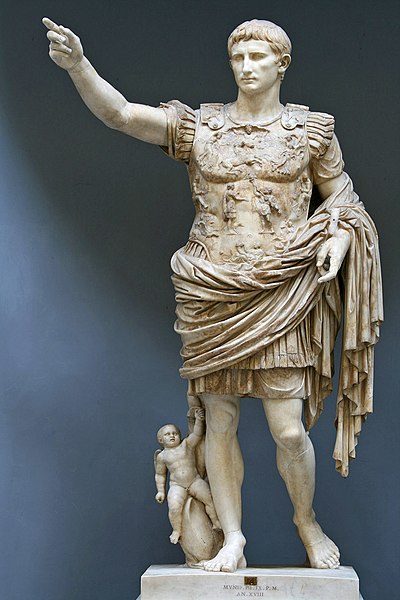All this month my co-contributors are bringing you excellent posts on a diverse list of famous historical buildings. I thought it would be a sort of palate cleanser to do my post about an interesting little building that was considered great because of its lack of greatness, famous not for its splendor but for its conventionality: the Emperor Augustus' house in Rome, the Domus Augusti.
Atop the Palatine Hill sprawls an immense, luxuriant palace – that's the Domus Augustana, completed by Domitian in 92 CE. A little way down the hill sits a smaller two-story house, still a mansion by the standards of most Romans but lacking the conspicuous grandiosity of the more well-known imperial dwellings. This is the house Augustus built for himself. Like those other palaces, the Domus Augusti was designed to make a statement; but rather than a declaration of imperial greatness, Augustus' house was more like the epitome of ancient humble-bragging. The Princeps prided himself on his lack of pretense and adherence to traditional, conservative Roman values. (Augustus prided himself on a lot of things, but that was a big one.) The man who famously “found a city of bricks and left one of marble” did not apply that same grandeur to his own abode. Compared to the homes of his descendants – Tiberius' mega-villa, Nero's urban monstrosity, etc. – Augustus' house was decidedly zhuzh-free. Suetonius described it thus:
He lived […] on the Palatine in a modest dwelling remarkable neither for size or elegance, having but one short colonnade with columns of local stone, and rooms without any marble decorations or handsome pavements. For more than forty years he occupied the same bedroom in winter and summer.
 |
| Hi, I'm Augustus -- welcome to my crib. |
 |
| layout of Domus Augusti, with the Temple of Apollo adjacent |
Augustus liked summering in villas around his burgeoning Empire, but the Domus Augusti remained his official place of residence. The house burned down either in 3 CE during Augustus' lifetime or later in the big fire of 69, and was at least partially rebuilt. It became state property, slowly dwarfed by other buildings until it was lost in the ruins of time, then rediscovered in 2008. As you can see in the short video below, it's been popular with tourists ever since. With the restoration of Augustus' mausoleum (reopened to coincide with the 2000th anniversary of his death), interest in the first emperor of Rome and his dysfunctional family is as high as ever.